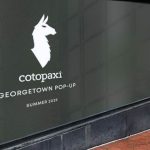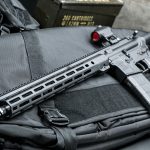New York City was a flurry of activity last week as the latest rush of investor conferences offered investors a fresh look at some of the sporting goods industrys public companies and some insight on what the future may hold.
For Golf Galaxy, the name of the game at the 52 store chain is consolidation. Sixteen doors were opened during the last year. During their presentation at the Stephens 2006 Consumer Conference management described the golf market as similar to the electronics market in the 80s, in that golf retail is still a very fragmented industry with the opportunity for the retailer to become much larger through acquisitions and new store openings. To this end, management sees the chain having a 250-store potential with expansion into California, Arizona, and Florida. The company plans to open 14 to 16 stores during fiscal 2007.
On the financial side, management was both excited and proud of their bottom line, which is growing faster than sales. They expect this trend to continue with operating margins expanding 6% in the coming year. They point to their Advantage Members club as a major driver in their ability to grow the bottom line. The club accounts for more than 50% of sales and allows the company to more effectively spend its advertising monies by using focused and direct e-mail and mailers that they know will fall into the hands of golfers and customers.
Separately, Golf Galaxy announced the completion of the companys acquisition of The GolfWorks. The purchase price, excluding direct costs of the acquisition, consisted of a combination of $3.7 million in cash and 250,862 shares of GGXY common stock valued at $4.8 million.
Dicks Sporting Goods believes it can “nearly double” in size in the currently existing footprint with 15% store growth each year, reaching 800 stores after 8+ years of organic growth, most of it coming from backfilling existing markets. DKS doesnt expect square footage growth to be as impactful as in past years.
DKS sees improving its 6.5% operating margin 30 basis points each year by leveraging the companys buying power and by increasing the private label sales in the store. DKS sees private label accounting for 11.9% of the companys total business, up from 8.6% last year, with a goal of 15% over the next couple years. For the company, private label has margin rates that are 500 to 600 basis points higher than similar second tier vendors. The retailer posted an 11.3% Return on Invested Capital in 2005, a number which it expects to improve as the integration of the acquired Galyans chain is completed. Management said they take a four cents per share charge on relocations related to the GLYN acquisition.
Management said that guidance of 3% to 5% is on the “higher end of any guidance we have given.” Management made a comment that they “dont see ourselves as recession proof; but rather recession resistant.”
DKS said they took a “very granular look at TSA.” They said they decided that based on who they want to be and how they want to grow the business, they did not think it was an appropriate direction for them. “You cant fix bad real estate” was the key for them based on the geographic overlap of the stores.
VF Corp. presented their current strategic plan transitioning from an apparel manufacturing company to a brand builder. With The North Face, the company continues to pursue its owned-retail expansion. While, the rumors of a massive 300+ location expansion are not likely to be true for TNF, VF Corp. does plan to grow the store count for the brand in order to “give the consumer a better look at the total line and the lifestyle presence of the brand.”
According to Mackey Macdonald, VFCs chairman and CEO, TNF reported 18% operating margins in 2005. In comparison, VFs Nautica brand reported a 16% operating margin, up from 7% before VFC acquired the brand. Vans reported a 13% OM, up from 3% before the acquisition. VFC has expanded its lifestyle offering from only 15% of its total line five years ago to over 40% of its line today and they plan to take it to 60%.
Jarden is continuing with its cost savings initiative, a program that began shortly after its acquisition of Coleman and Camping Gaz and is expected to generate $75 million to $110 million program in saving. The two brands are now housed in the companys Outdoor Solutions segment, which is roughly 25% of Jardens $3 billion in annual sales. Management feels that Coleman has a 20% to 30% market share in outdoor equipment, with the next closest competitor in the single-digits. Part of Jardens Buy vs. Build strategy calls for the company to continue to pursue “tuck-in” acquisitions, particularly in outdoor.
Gander Mountain CEO Mark Baker came off of an impressive quarter, which he called “one in a row” and explained the companys prospects for future growth. Gander has grown from a $240 million company to an $800 million company over the last five years. While it is seeing some impact from competition in its larger markets, it has been quite successful with its smaller “second and third tier” market locations.
Baker said that in these locations, it is seeing almost no outside competition. “We are able to go into markets that have two or three mom & pop stores that do maybe $3 million in business combined and open a Gander Mountain location that does $10 million a year.”
The company has just fewer than 100 stores today and sees the opportunity to triple that number. As it expands, its vulnerability to local weather patterns will decrease due to geographic diversity, and, according to Baker, the company should be able to support single-digit comp-store sales increases.
Cabelas CFO Ralph Casstner laid out the retailers plans for growth over the next several years, which relies heavily on its multi-channel positioning; direct, brick & mortar, and financial services, represented by its credit card business. Since 1961, Cabelas has seen its top-line grow every year, primarily due to its successful catalog business, and more recently, its Internet business. The new focus for CAB is on brick & mortar expansion. On several occasions, Casstner emphasized the multi-channel advantage that Cabelas has over its competition. In August, Cabelas won a court battle against Gander Mountain regarding a Trademark License Agreement between Gander Mountain and Cabelas. The agreement effectively prevents Gander Mountain from using many of its own trademarks, including the Gander Mountain name and logo, in any direct marketing business.
Cabelas reported over $1 billion in direct sales last year. The company claims that more men between the ages of 35 to 45 read their catalog than any other direct merchandising piece in the country. The company is leveraging this large audience to help in their planning for new stores. By looking at direct retail buying habits, Cabelas management is able to target the size of a potential Brick & Mortar market down to the zip code. This lets them know the demand for the store location, product assortment, merchandising, and even the potential profitability of the store before it even opens. The company will continue to leverage its direct retail assets to open more brick & mortar locations, expanding into Canada and all regions of the U.S.
Sport Chalet was able to tell a very different story from Cabelas and Gander Mountain. Four and a half years ago, Sport Chalet began expanding outside of California for the first time, and they continue this initiative today. While Cabelas is able to leverage its direct marketing data for store expansions, Sport Chalet uses a two pronged approach to open locations in new markets. The company spends nearly a year to research the market, but it also is able to react very quickly to change its assortment in reaction to market needs.
Sport Chalet also takes a very different approach towards product assortment at all of its locations. While many retailers are trying to boost the percentage of their private label offering, Sport Chalet does not offer any private label except tee shirts and hats. Because of the companys focus on supporting national brands, it is able to carry many brands that are traditionally only found in specialty retailers.
Sport Chalet taught over 200 climbing classes last year and chartered over 300 boats for S.C.U.B.A. instruction. The company uses these services to sell merchandise. SPCH CEO, Craig Levra said, “Some people ask me how we compete with a retail giant big enough to have climbing walls inside its stores. Well, we take people outside and teach them how to climb for real.”
Looking forward, SPCH has several new initiatives underway. Sport Chalet will implement its new “Action Pass” Customer Relationship Management program that rewards its best customers with discounts and first access to new gear. At the same time it allows the company to monitor buying habits and brand loyalty. They are also launching a car rack installation shop at all stores. Last year, the company tested a ski lease program for youth skiers and it was so successful that they are rolling it out to all locations and expanding the program to include adults. Customers who take advantage of the program will be able to trade in their skis up to three times throughout the year.
Footlocker Inc. said that 25%, or $1.38 million, of total sales last year was from international stores, while 7%, or $381 million, came from the direct-to-consumer business and the balance (62%) was generated from the U.S. business that includes Foot Locker, Lady Foot Locker, Kids Foot Locker, and Champs. Management said U.S. FL store count has “stabilized at current levels.”
One interesting note was that one-third of styles sold are over $100 now. Low profile is driving current sales trends. The category carries higher ASP and higher GM than classics. Management said they were “pleasantly surprised with performance” at Footaction. They see it as a growth opportunity to 500 doors.
Genesco management said their goal is to reach $2 billion and 2,400 stores in five years (2010), driven by both organic growth, new concepts, and acquisitions. In fact, management said they intend to be “very aggressive in seeking out acquisitions.” Underground Station can grow to 500 stores.
Operating margin goal is 9% to 10%, with Journeys generating a 12.4% OM and Hat World delivering a 13.6% operating margin. They see an opportunity to continue to raise Underground OM to the high-singles.
GCO believes they are the “national dominant player in skateboard shoes.” They said that “athletic has leveled off in growth rate, but remains a key part of the mix.”
Brown Shoe Co. sees wholesale driving 39% of their total business. Management said they are the number one retailer for Skechers and are a top ten retailer for Nike, a position that enabled them to get “a significant allocation” of the new Nike Reax product. They expect to see earnings and revenue shift for Q1 to Q2 due to department store consolidation, with Q1 EPS down 30%, but Q2 EPS up double.
The e-commerce business for total Brown Shoe Co. was $50 million in 2005.
>>> Look for more details in the SportsOneSource Sporting Goods Market Report in early May…















